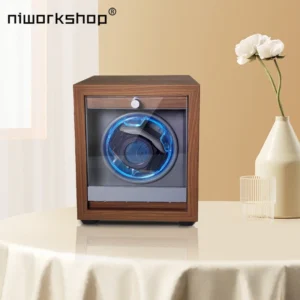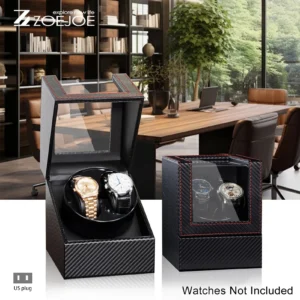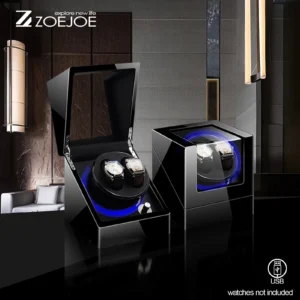Understanding Watch Winder Fundamentals for Optimal Timepiece Care
For watch enthusiasts with automatic timepieces, a quality watch winder serves as an essential accessory that maintains the power reserve when the watch isn’t being worn. Unlike manual watches that require daily winding by hand, automatic watches stay powered through wrist movement during regular wear. When left unworn, however, these mechanical marvels eventually stop—which is where watch winders come in.
Getting your watch winder settings correct is crucial for maintaining your timepiece’s longevity and accuracy. Two key parameters require attention when setting up your winder:
- Turns Per Day (TPD): The number of rotations your watch winder makes in a 24-hour period
- Winding Direction: Whether your watch needs clockwise rotation, counter-clockwise rotation, or bidirectional movement
Using incorrect settings can lead to various issues. For example, insufficient TPD might cause your watch to stop unexpectedly, while improper direction settings may result in ineffective winding despite the winder running continuously.
Throughout this guide, we’ll walk through everything you need to know about automatic watch winder programming settings to properly maintain your collection, including how to identify movement requirements, locate the correct settings, make adjustments, and troubleshoot common problems. Whether you’re new to watch winders or looking to optimize your existing setup, this information will help preserve your valuable timepieces.
Essential Watch Winder Terminology and Parameters
Before diving into specific settings, it’s important to understand the key terminology and parameters that govern watch winder operation.
Turns Per Day (TPD)
TPD refers to the number of complete rotations a watch winder makes in a 24-hour period. This measurement directly correlates to how much power is transferred to your watch’s mainspring:
- Most automatic watches require between 650-1800 TPD
- Mainstream modern movements typically need 650-800 TPD
- More complex movements or those with longer power reserves may require higher TPD settings
- The TPD requirement is determined by the movement’s design, efficiency, and power reserve capacity
Proper TPD settings guide information ensures your watch maintains adequate power without unnecessary mechanism wear.
Winding Direction Options
Automatic watches wind in specific directions based on their movement design:
- Clockwise rotation (CW): The winder turns in a clockwise direction only
- Counter-clockwise rotation (CCW): The winder turns in a counter-clockwise direction only
- Bidirectional rotation (Both): The winder alternates between clockwise and counter-clockwise movements
The required direction depends entirely on how the watch’s internal winding mechanism is designed to function.
Rest Cycles and Duty Cycles
Many quality automatic watch winders incorporate rest periods between winding sessions. These “duty cycles” mimic the natural wearing pattern of a watch, which isn’t in constant motion when worn. A typical program might run for a few minutes, then rest for a period before starting again, rather than rotating continuously.
Winder Cushion Fit
The way your watch fits on the winder cushion significantly affects winding efficiency. A loose fit can result in slippage and inadequate winding, while an overly tight fit might stress the watch band. Most quality winders include adjustable cushions to accommodate different watch sizes and bracelet/strap configurations.
How Automatic Watch Movements Determine Winder Requirements
Understanding how automatic watches work helps explain why different movements need different winder settings.
The Automatic Winding Mechanism
Automatic watches contain a weighted rotor that swings with wrist movement. As this rotor turns, it winds the mainspring, storing energy that powers the watch. This system comes in two main varieties:
- Unidirectional winding systems: The rotor only winds the mainspring when turning in one specific direction
- Bidirectional winding systems: The rotor efficiently winds the mainspring regardless of which direction it rotates
Factors Influencing TPD Requirements
Several movement design elements determine how many turns per day a watch needs:
- Rotor efficiency: Heavier rotors or those with improved gearing may generate more winding power per revolution
- Power reserve duration: Watches with longer power reserves generally need fewer daily rotations to stay running
- Winding mechanism design: Some movements are simply more efficient at transferring energy to the mainspring
The Mainspring and Power Storage
The mainspring is the power source in mechanical watches. When fully wound, it provides maximum power reserve (typically 40-80 hours depending on the movement). The watch winder settings for different movement types are designed to keep the mainspring adequately tensioned without overloading it.
The “Overwinding” Misconception
A common misconception is that automatic watches can be damaged through “overwinding.” In reality, modern automatic watches include a slipping clutch or similar mechanism that prevents damage when the mainspring reaches full tension. Despite this protection, using the correct settings remains important to:
- Reduce unnecessary wear on the slipping mechanism
- Maintain optimal power reserve
- Minimize movement wear over time
- Preserve lubricants and extend service intervals
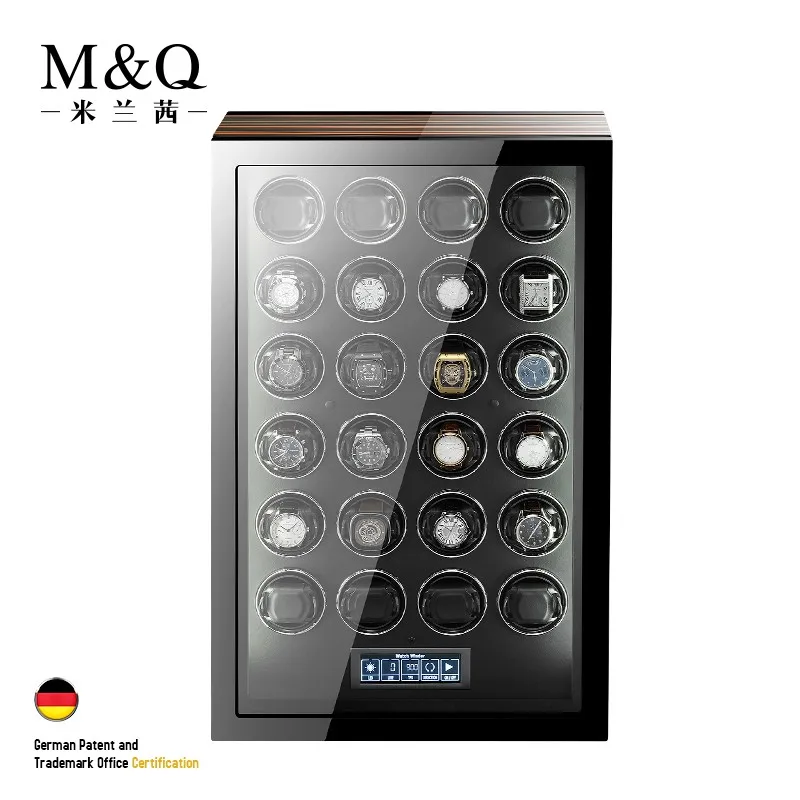
Finding the Correct Winder Settings for Your Watch
Locating the proper settings for your specific timepiece requires consulting reliable sources in the following order of authority:
Authoritative Information Sources
- Watch manufacturer documentation: The watch’s user manual or the manufacturer’s official website typically provides the most accurate TPD and direction requirements
- Movement manufacturer specifications: For watches with known calibers from companies like ETA, Sellita, or Miyota
- Reputable watch winder databases: Many quality winder manufacturers maintain comprehensive setting databases
- Watch enthusiast forums and communities: Often contain user-reported optimal settings based on practical experience
Identifying Your Watch Movement
To find movement-specific settings, you’ll need to identify your watch’s caliber number:
- Check the case back for engravings with caliber information
- Review documentation that came with your watch
- Contact the manufacturer with your watch’s serial number
- Research the specific model online to determine its movement
Interpreting TPD Recommendations
When you find TPD recommendations, you may encounter ranges rather than specific numbers:
- If given a range (e.g., 650-850 TPD), start with the lower end to minimize wear
- When in doubt, 650-750 TPD is a safe starting point for most modern automatic movements
- Vintage watches often require lower TPD settings (500-650 TPD) due to less robust construction
For the most reliable performance, consult our ultimate guide on automatic watch winder settings which covers an extensive range of movements. If you’re shopping for a new winder, consider luxury watch winders that offer precise control over these settings.
Step-by-Step Guide to Setting Up Your Watch Winder
Once you’ve determined the correct specifications for your watch, follow these steps to properly configure your watch winder:
1. Initial Watch Preparation
- If your watch has completely stopped, manually wind it first (typically 20-30 crown turns)
- Set the correct time and date
- Ensure the watch is running before placing it on the winder
- Position the watch securely on the cushion, making sure it’s snug but not overly tight
2. Selecting and Inputting TPD Value
- Enter the manufacturer’s recommended TPD value using your winder’s controls
- If uncertain, begin with a conservative setting around 650-750 TPD
- Note that different winder brands display TPD settings in various ways:
- Some use direct TPD numbers
- Others use levels or modes that correspond to TPD ranges
- Consult your winder’s manual to understand how its settings translate to actual TPD
3. Choosing the Appropriate Winding Direction
- Set the winding direction based on your movement’s specifications:
- Clockwise (CW)
- Counter-clockwise (CCW)
- Bidirectional (Both)
- If you’re uncertain about direction requirements, bidirectional is generally the safest default option, although it may be less efficient for unidirectional movements
4. Configuring Rest Periods
If your winder offers programmable rest periods:
- Set a duty cycle that mimics natural wear patterns (e.g., 2 hours running, 6 hours resting)
- This approach reduces unnecessary mechanism wear and more closely resembles how a watch would be worn
5. Testing and Monitoring
- After setting up your winder, monitor your watch’s performance for 24-48 hours
- Check if the power reserve is maintaining properly
- Verify accurate timekeeping (within the watch’s normal specifications)
- Make incremental adjustments if needed
For detailed instructions on programming specific winder models, our programming watch winder setup guide provides model-specific walkthroughs. Additionally, understanding TPD in watch winders can help you fine-tune these settings.
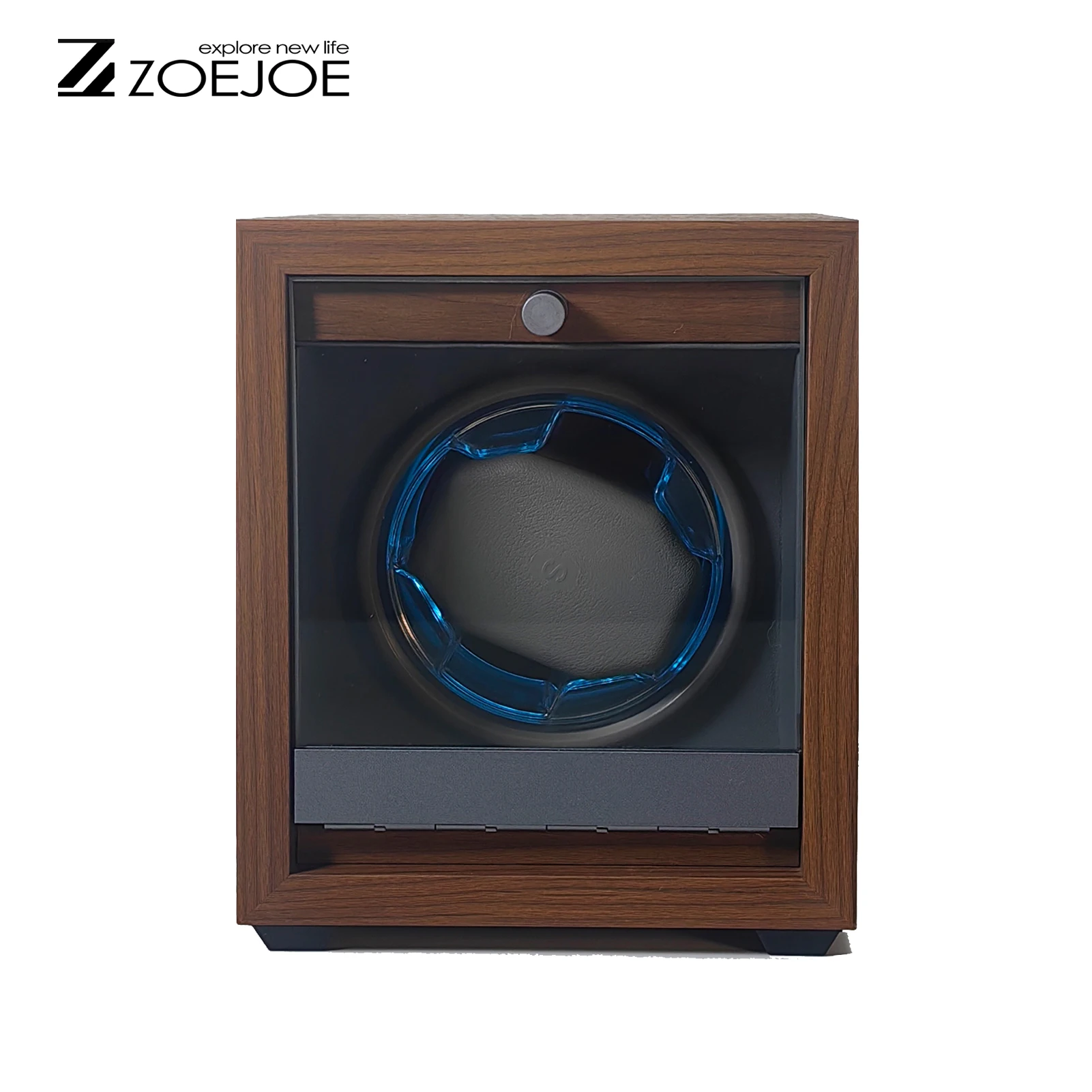
Specific Setting Requirements for Popular Watch Movements
The following table provides recommended settings for common watch movements you might encounter in your collection:
| Brand | Movement/Caliber | Recommended TPD | Winding Direction |
|---|---|---|---|
| Rolex | 3135, 3235 | 650-750 | Bidirectional |
| Rolex | 3130, 3230 | 650-750 | Bidirectional |
| Omega | Caliber 8500/8900 | 800-900 | Bidirectional |
| Omega | Caliber 3300 series | 650-800 | Bidirectional |
| ETA | 2824-2 | 650-800 | Bidirectional |
| ETA | 2892.A2 | 650-800 | Bidirectional |
| Sellita | SW200 | 650-800 | Bidirectional |
| Sellita | SW300 | 650-800 | Bidirectional |
| Miyota | 9015 | 650-850 | Bidirectional |
| Miyota | 8215 | 650-850 | Clockwise |
| Seiko | 6R15 | 650-800 | Bidirectional |
| Seiko | 4R36 | 650-800 | Bidirectional |
| Tudor | MT5612 | 650-800 | Bidirectional |
| IWC | Caliber 80000 series | 750-900 | Bidirectional |
| Jaeger-LeCoultre | Caliber 889 | 800-1000 | Bidirectional |
Some movements have unique requirements worth noting:
- Rolex Calibers: While bidirectional, they tend to be more efficient with slightly lower TPD settings
- Miyota 8215: One of the few modern movements that winds efficiently in only one direction (clockwise)
- Vintage Movements: Generally require lower TPD settings (500-650) and may have unidirectional winding mechanisms
For comprehensive information about specific calibers, refer to our detailed guide on watch winder settings for different movements.
Troubleshooting Problems with Watch Winder Settings
Even with careful setup, you might encounter issues with your winder’s performance. Here are solutions to common problems:
Watch Stops Despite Being on Winder
Possible causes and solutions:
– Insufficient TPD: Increase the TPD setting by 100-200 turns
– Incorrect winding direction: Change to the proper direction or use bidirectional
– Poor positioning on cushion: Ensure the watch is securely positioned to receive the winding motion
– Watch needs service: If adjustments don’t help, your watch may require maintenance
Watch Running Fast
Possible causes and solutions:
– Excessive winding: While modern watches have slip mechanisms, some watches may run slightly fast when constantly at full power. Try reducing TPD or increasing rest periods
– Watch needs regulation: If the issue persists, your watch may need adjustment by a watchmaker
Watch Running Slow
Possible causes and solutions:
– Insufficient power reserve: Increase TPD settings
– Watch needs service: Sluggish performance might indicate the movement needs cleaning or servicing
Diagnostic Process
When troubleshooting:
1. Start with a lower TPD setting and gradually increase in 100-200 TPD increments
2. Test each new setting for at least 48 hours to observe effects
3. Try changing winding direction if TPD adjustments don’t resolve the issue
4. Document which settings work best for future reference
For detailed troubleshooting approaches, our guide on troubleshooting common watch winder problems provides in-depth solutions. If you’re looking for a reliable single-watch solution, explore our single watch winder options.
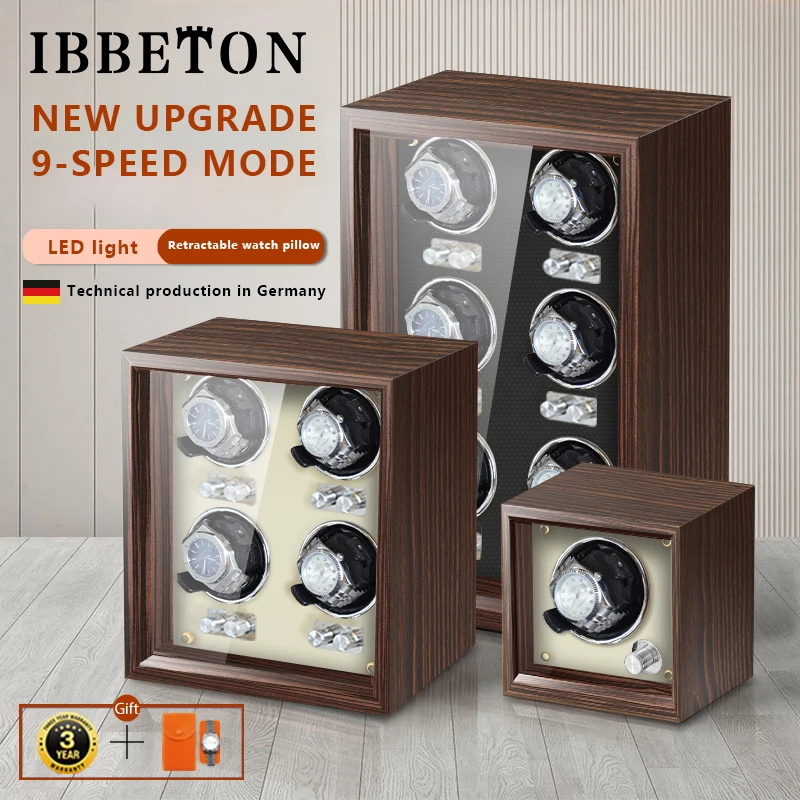
The Impact of Winder Quality on Setting Effectiveness
The quality and design of your watch winder significantly affect how accurately it delivers your chosen settings:
Critical Quality Factors
- Motor precision: Higher-quality winders maintain consistent rotation speeds and deliver more accurate TPD counts
- Directional control: Premium winders provide precise control over rotation direction with minimal mechanical slop
- Programming flexibility: Better winders offer more granular TPD adjustments and customizable rest periods
- Power delivery consistency: Quality winders maintain consistent operation over time rather than slowing as batteries deplete
Features That Facilitate Proper Settings
- Independent rotor control: Valuable for multi-watch winders, allowing different settings for each watch
- Digital programming interfaces: Provide more precise control than simple mechanical switches
- Accurate timekeeping: High-end winders use quartz timing to ensure TPD accuracy
- Memory retention: Quality winders maintain programmed settings during power interruptions
Cushion Design Considerations
The cushion that holds your watch affects winding efficiency:
– Properly sized cushions prevent slippage during rotation
– Adjustable cushions accommodate different watch case sizes and bracelet configurations
– Quality materials provide adequate friction to prevent movement without damaging the watch
Understanding watch winder compatibility is essential when matching your timepieces with the right winder.
Optimizing Winder Settings for Collection Rotation
For collectors with multiple timepieces, strategic watch winder usage can enhance convenience and watch longevity:
Collection Management Strategies
- Prioritize complicated watches: Keep watches with complex features (annual calendars, moonphases) wound to avoid lengthy resetting procedures
- Rotating wear schedule: For watches worn weekly, minimal TPD settings maintain power without unnecessary component wear
- Preservation mode: For rarely worn pieces, consider using winders intermittently (3-4 days per week) rather than continuously
Creating an Efficient Winder Schedule
- Group watches by similar TPD requirements to simplify winder programming
- Consider rest days for watches in long-term storage to minimize wear
- For larger collections, rotate which watches are kept on winders based on wearing plans
Automatic Watch Winder, Luxury Watch Winder, Single Watch Box
$307.39 Select options This product has multiple variants. The options may be chosen on the product page4 Watch Winder, 6 Watch Box, Automatic Watch Winder
$512.31 Select options This product has multiple variants. The options may be chosen on the product pageAutomatic Watch Winder, Single Watch Winder, Wooden Watch Holder
$201.76 Select options This product has multiple variants. The options may be chosen on the product pageAutomatic Watch Winder, Leather Watch Travel Case, Single Watch Winder
$146.30 Select options This product has multiple variants. The options may be chosen on the product pageAutomatic Watch Winder, Double Watch Winder, Leather Watch Boxes
$147.60 Select options This product has multiple variants. The options may be chosen on the product pageAutomatic Watch Winder, Double Watch Winder
$206.18 Select options This product has multiple variants. The options may be chosen on the product page
Advanced collectors might benefit from integrated winder systems with programmable schedules to optimize maintenance for each timepiece. Finding the best automatic watch winder settings for your specific collection can significantly impact long-term watch care. Those with multiple timepieces might consider a 4-watch winder to accommodate several pieces with different setting requirements.
Frequently Asked Questions About Watch Winder Adjustments
Can incorrect winder settings damage my watch?
Modern automatic watches have protection mechanisms to prevent overwinding damage. However, consistently incorrect settings can cause unnecessary wear on components and lubricants over time. Using appropriate settings optimizes performance and potentially extends service intervals.
Should I use a winder for watches I wear daily?
Watches worn daily generally don’t need winders. The natural movement of your wrist provides sufficient winding. Winders are most beneficial for watches worn in rotation or occasionally.
Is it better to set TPD higher or lower when uncertain?
When in doubt, start with a lower TPD setting. You can always increase it if the watch stops or loses significant time. Lower settings minimize potential wear while still maintaining functionality.
Do vintage watches need different winder settings?
Yes, vintage watches typically benefit from lower TPD settings (around 500-650 TPD) and may have specific directional requirements. They often have less robust winding mechanisms and may lack the protection systems found in modern watches.
How often should I check if my winder settings are working properly?
Monitor a newly set up watch for 48-72 hours to ensure proper operation. After that, monthly checks of accuracy and power reserve are sufficient to confirm settings remain appropriate.
For collectors with pairs of watches, our double watch winder options provide versatility for different movement requirements in a compact footprint.
Proper winder settings ensure your automatic watches remain ready to wear while preserving their mechanical integrity. With the guidance in this article, you can confidently adjust your watch winder to provide optimal care for each timepiece in your collection.




